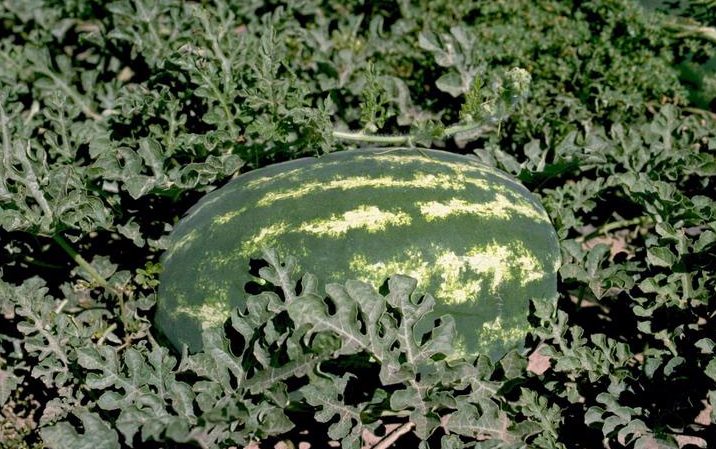Crop Production

Triploid or “seedless” watermelons were first developed in Japan over 50 years ago. Although the science of making seedless watermelons dates back over five decades, triploid watermelons were not commercialized until the past 15 to 20 years.
Seeds
One difficulty has been with the triploid seeds themselves. The embryos in triploid seeds are often poorly developed, usually filling only about 80 percent of the seed cavity. These poorly developed embryos are locked in thick seed coats. This situation makes triploid seed more difficult to germinate and can decrease seedling vigor. Special conditions for germinating triploid seed should always be employed including using higher temperatures and precise moisture control during germination. Direct seeding into the field generally results in poor, weak stands.
Seedless watermelons are always hybrids. This fact makes seed costlier. While these seedless plants are sterile, female flowers from these sterile plants can produce fruit if they are pollinated by normal pollen from a seeded watermelon or suitable pollinizer. In a seedless watermelon, occasionally a few hard seeds can develop for reasons explained below.
Planting and Growing
Triploid seedlings should be transplanted during mild weather or protected from harsh environmental conditions. A specific pollinizer or other diploid (seeded) variety must to be planted nearby to furnish viable pollen. The triploid flowers produce little, if any, viable pollen. The stigmas (female portion of the triploid’s flowers) are receptive to pollen, however, and require viable pollen in order to initiate the process of fruit development. Seed companies recommend specific pollinizers for each of their seedless watermelon varieties. Pollinators such as honeybees must be present to transfer the pollen from the diploid flowers to the triploid flowers. Triploid plants should not be subjected to stressful conditions such as lack of water, too much water, or temperature extremes.
Genetics
Normal watermelons are diploids having 22 chromosomes in their somatic cells (2X=22). Somatic cells are cells that make up everything in the plants with the exception of flowers and parts that develop from those flowers. Using traditional breeding techniques (that is, non-GMO techniques), special watermelons can be made called tetraploids, these tetraploids have 44 chromosomes (4X=44). When a tetraploid is crossed with a diploid, the resulting hybrid has 33 chromosomes (3X=33) which are seedless. These are called tripods.
Tetraploid watermelons lines are created in the greenhouse by treating the shoot apex of young diploid watermelon seedlings (or the seed) with a chemical called colchicine. This chemical inhibits cells division and tetraploidy is induced. The induced tetraploid watermelon plants are mostly fertile producing tetraploid progeny through their seed. Breeders maintain these tetraploid lines in isolation plots just as they do normal, diploid watermelons.
As stated above, the triploid plants are essentially sterile, since it produces defective gametes (gametes are pollen or egg cells.). A few fertile gametes are produced, however, but the number produced is less than 0.1%. Since a few fertile gametes are produced, a few hard seeds can develop; whether they occur or not depends on growing conditions as well as genetics. It is also not usual for the seedless watermelons to produce soft seed coats called “pips.” Pips are soft and generally do not negatively affect the quality of the internal flesh. The development of these pips is dependent on the variety and environmental conditions.

